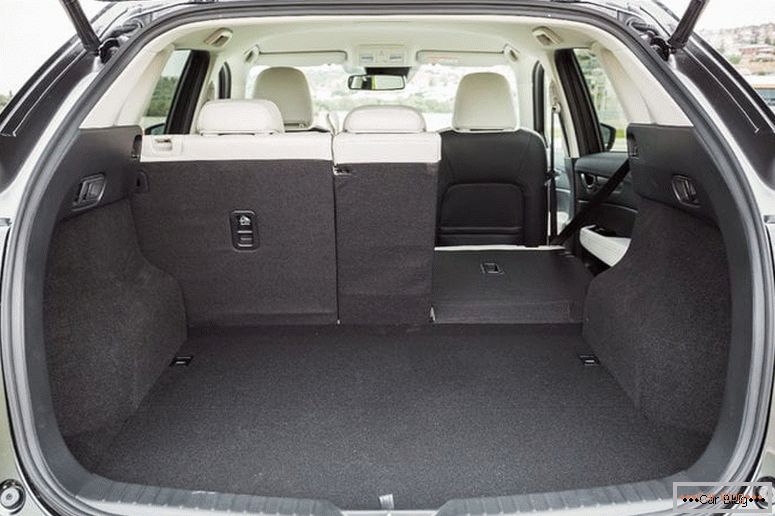>
Introduction
According to statistics, in more than 80% of all road traffic accidents are cars. More than one million people die every year and about 500,000 are injured. In an effort to draw attention to this problem, every 3rd Sunday of November, the United Nations declared the World Day of Remembrance for Road Traffic Victims. Modern car security systems are aimed at reducing the existing sad statistics on this issue. The designer of new cars always closely follow the standards of production and safety of cars. To do this, they simulate all sorts of dangerous situations in crash tests. Therefore, before the release of the car is thoroughly tested and validity for safe use on the road.
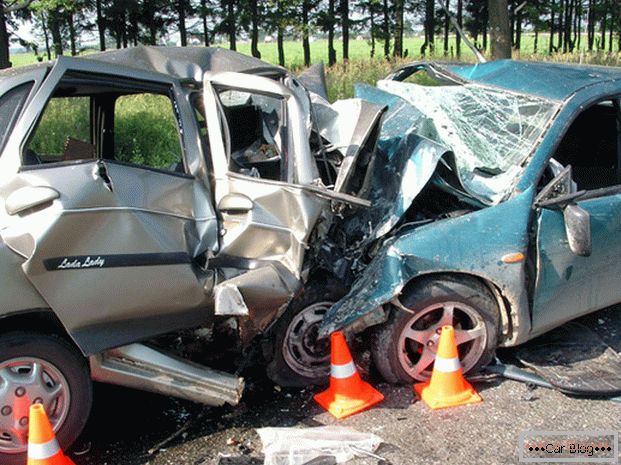
Car accidents cause many deaths
Но полностью устранить этот вид происшествий невозможно при таком уровне развития техники и общества. Поэтому основной упор делается на предупреждение аварийной ситуации и ликвидацию последствий после неё.Читать далее о системах безопасности автомобиля-->
Auto Safety Tests
The main organization for the assessment of the safety of cars is the European Association for Testing New Cars. It exists since 1995. Each new car brand that has passed through a series of tests is rated on a five-star scale - the more stars, the better.
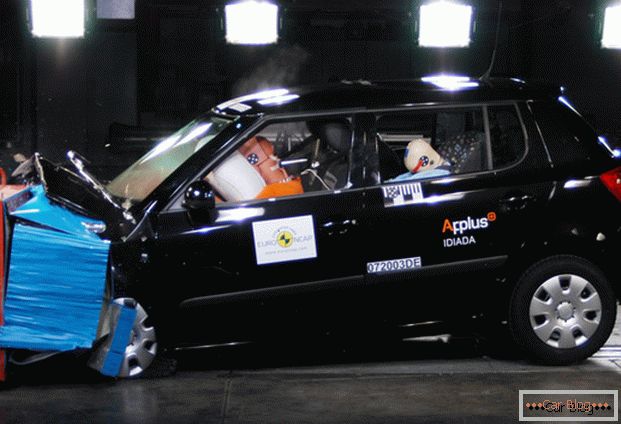
Every new car brand must pass a series of tests.
For example, thanks to tests, they proved that using high airbags reduces the risk of head injury by 5-6 times.
Active Security Settings
Active vehicle safety systems are a set of constructive and operational properties that are aimed at reducing the likelihood of accidents on the road.
Let us analyze the main parameters that are responsible for the level of active security.
- For the efficiency of driving while braking braking properties, which serviceability also allows to avoid road accident. The anti-lock system is responsible for adjusting the braking level of each wheel and the wheel system.
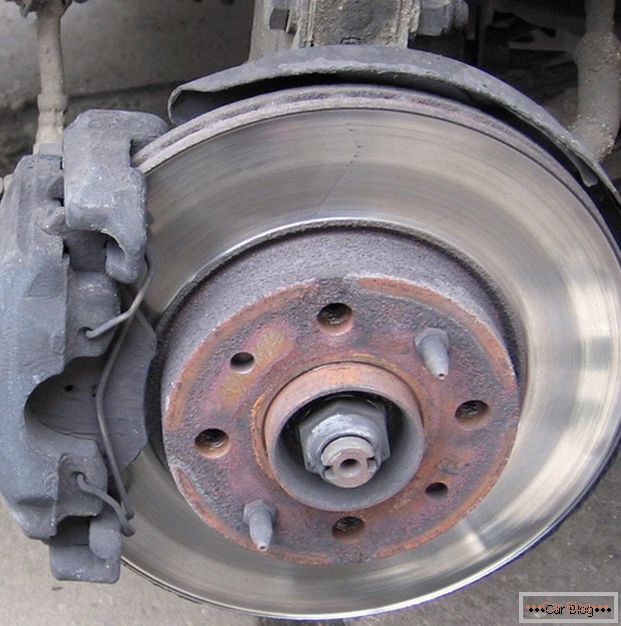
The serviceability of the braking system of the car repeatedly reduces the likelihood of an accident
- Traction properties cars affect the possibility of increasing the magnitude of speed in motion, participate in the commission of overtaking, adjustment in lanes and other maneuvers.
- Production and tuning of the suspension, steering, brake system is carried out using new quality standards and modern materials, which allows to improve failsafe system.
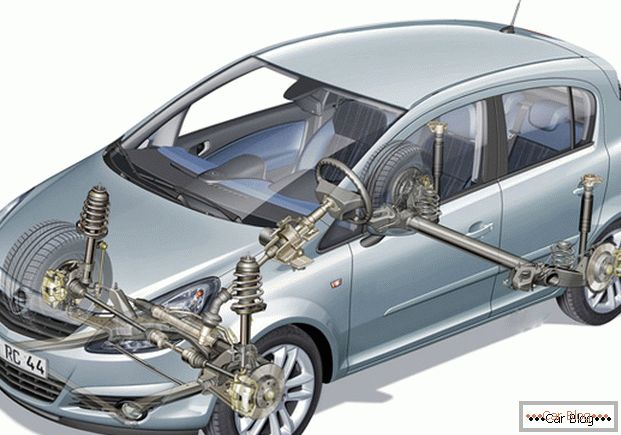
New quality standards must guarantee the reliability of the system.
- It has an impact on safety and car layout. More preferred are cars with a front-engine layout.
- For the best passage of the trajectory of movement, avoiding drifts, emissions on the roadside and other problems with deviation from a given path, is responsible vehicle stability.
- Car handling - the ability of cars to move along the path selected by the driver
 Discounts for new cars! Profitable loan from 9.9% installments 0%
Discounts for new cars! Profitable loan from 9.9% installments 0%  adom.ru. One of the definitions characterizing the controllability is the ability of the car to change the motion vector under the condition that the steering wheel is still - steering. There are tire steering and roll.
adom.ru. One of the definitions characterizing the controllability is the ability of the car to change the motion vector under the condition that the steering wheel is still - steering. There are tire steering and roll. - Informative - property of the car, the task of which is the timely provision of information to the driver about the intensity of traffic on the road, weather conditions and other things. There are internal informative, which depends on the radius of the review, the effective operation of the blowing and heating of the glass; external, depending on the overall dimensions, the range of color paint cars, serviceable headlights, brake lights; and additional information, which helps with fog, snowfall and at night.
- Comfort - the parameter responsible for the creation of favorable microclimate conditions during driving.
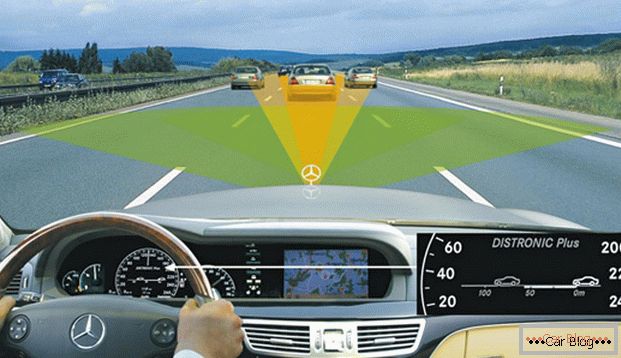
The driver must be provided with information about what is happening on the road.
Active safety systems
The most popular active safety systems that significantly increase the effectiveness of the braking system are:
1) Anti-lock brakes. It removes wheel lock during braking. The task of the system is to prevent the car from slipping in the event that the driver loses control during emergency braking. ABS reduces braking distance, which will avoid colliding with a pedestrian or land in a ditch. The advantage of the anti-lock braking system is the anti-skid system and electronic stability control;
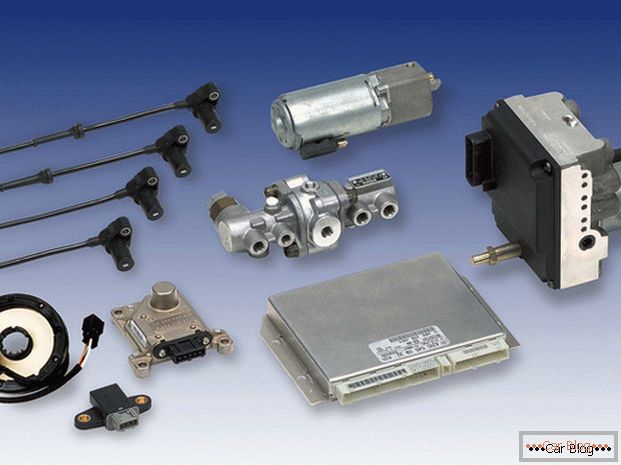
Anti-lock brakes (components)
2) Anti-traction system. The system is designed to improve driving in difficult weather conditions and poor traction conditions, using the mechanism of influence on the driving wheels;
3) Stability system. Prevents unpleasant skids of the car through the use of an electronic computer that controls the torque of the wheel or wheels at the same time. The system, under the leadership of a computer, takes control when the probability of losing control over a person is close — therefore, it is a very effective car security system;
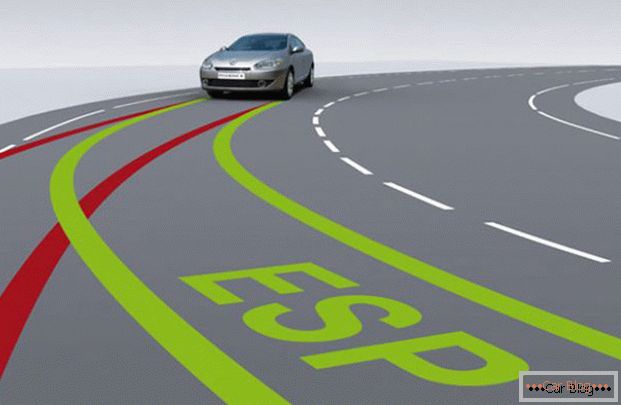
Stability system
4) Brake force distribution system. Complements the anti-lock brakes. The main difference is that CPT helps control the braking system throughout the entire movement of the car, and not only during an emergency. It is responsible for the uniform distribution of braking efforts across all wheels in order to maintain the trajectory established by the driver;
5) Electronic differential lock mechanism. The essence of its work is as follows: during skidding or sliding, a situation often arises that one of the wheels hangs in the air, continuing to spin, and the supporting wheel stops. The driver loses control of the car, which creates the risk of an accident on the road. In turn, the differential lock allows you to transfer the torque to the axles or universal joints, normalizing the movement of the car.
6) Automatic emergency braking mechanism. It helps in cases when the driver does not have time to fully press the brake pedal, i.e. the system automatically applies the braking pressure.
7) Pedestrian Approach Warning System. When a pedestrian approaches the car dangerously, the system will give a beep to avoid accidents and save his life.
There are also safety systems (assistants) that come into operation before the onset of the accident, as soon as they feel a potential threat to the life of the driver, while they take over responsibility for steering and braking system. The breakthrough for the development of these mechanisms gave a breakthrough in the study of electronic systems: new types of devices are being released, the usefulness of control units is increasing.
These systems include:
- Various radar, acoustic and ultrasound systems that warn the driver about an unfavorable distance with other cars, walls, obstacles;
- The system that allows you to automatically increase or decrease the speed when approaching other cars - adaptive cruise control;
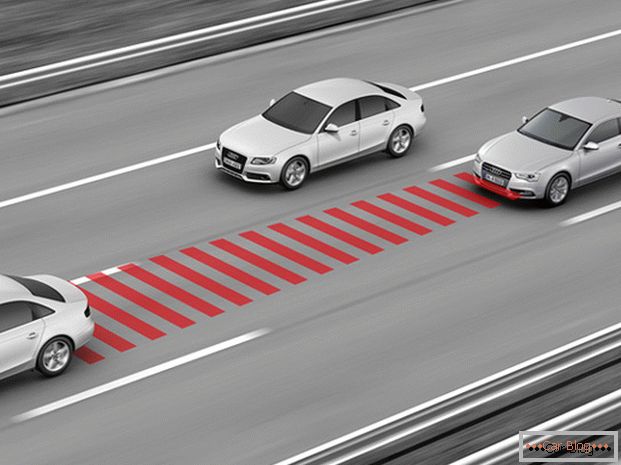
Adaptive cruise control
- Handbrake - a mechanism to keep the car tightly on different surfaces at a certain angle, thereby protecting it from unplanned movements;
- Systems that help control smooth descent and ascent;
- Automatic steering system;
- System providing night vision;
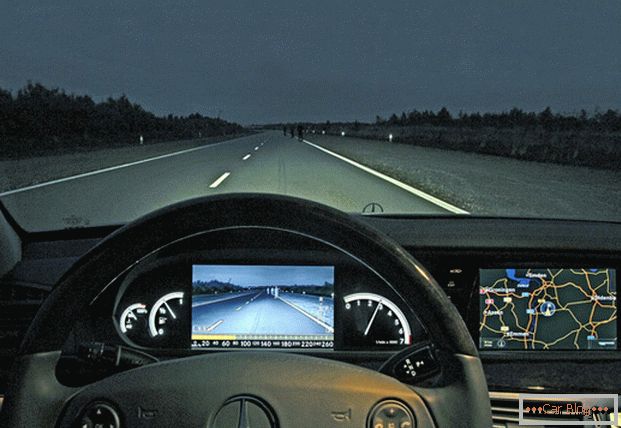
Night vision system
- Mechanisms for remote recognition of road signs;
- Recognition system and taking immediate action in case of driver fatigue.
Elements of passive safety
When the driver is no longer able to prevent an emergency, the elements of the vehicle’s passive safety system come into play.
The system includes the following components:
- Seat belts.
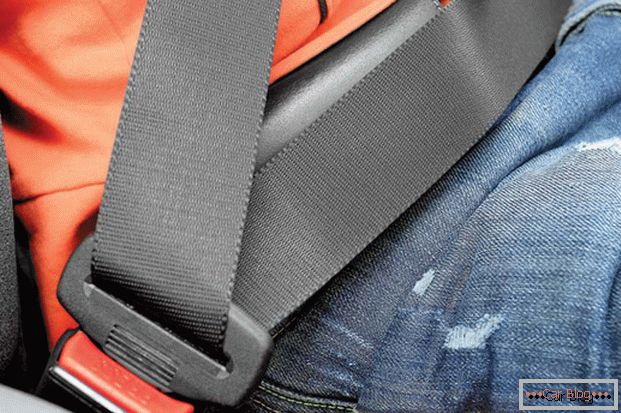
Seat belts
The idea to create a mechanism for binding the driver to the seat manifested itself in 1907, and in 1959 the first automobile belts were released. To this day, they remain the cheapest and most effective element to ensure safety. With the development of production technology and technology in general, belts with an automatic tensioning system began to appear, which perfectly manifest themselves in conjunction with airbags in case of an emergency: they work immediately and press a person to the chair.
Depending on the type, model and body of the car seat belts save life in 50-55% of cases.
- Airbags.
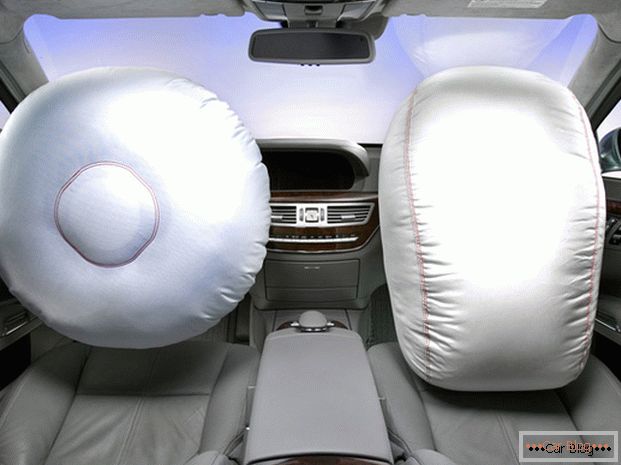
Airbags
The pillow is an unremarkable bag made of synthetic material, whose main task is to take the load as a result of a collision with a human body. Now the pillows practically do not leave any damage on the human body, however, they used to lead to hematomas on the body, and in extreme cases they could cause deafness. Very often this happened to people of small stature and children.
When using an airbag, you save yourself life in three cases out of ten, and with the combined use of an airbag and seat belt, the probability of a positive outcome increases to 80%.
- Head restraints.
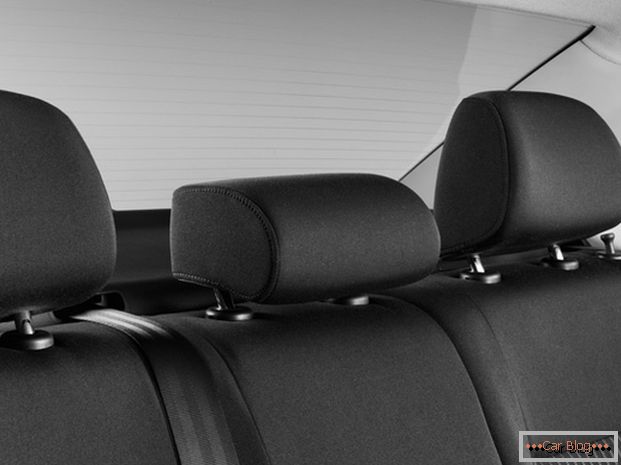
Head restraints
The designer claims that the headrests also protect our body, in particular the neck, from serious injury when in contact with the car body in case of an emergency. However, according to most people, the effectiveness of head restraints is exaggerated, and protection is achieved only under certain conditions.
- Structural integrity of the frame. Durable frame is the key to the safety of the driver and passengers during an accident.
- Strongly fixed seat. Allows you to keep the driver as a result of the accident and prevent it from moving around the cabin.
- Bumpers. Designed to absorb the energy entering at the moment of impact.
- Safe pedal assembly. It allows avoiding damage to the driver’s feet, since the pedal is separated from the attachment points during a collision.
- Technology for the production of glass on the basis of triplex, which does not cause great harm when destroyed.
- The mechanism for moving the engine and other elements of the car to the bottom during an accident to prevent them from getting into the cabin and causing damage to passengers.
Also on the passive safety is influenced by the size of the body, the more - the safer, and color.
Conclusion
Thanks to the development of science, active and passive safety systems are constantly being improved. Modern cars are equipped with more advanced security systems, which can significantly reduce the risk of an accident and reduce injuries to passengers and damage to equipment. EU statistics confirms that the use of these systems has reduced the number of fatalities on the road almost twice. Therefore, when choosing your car, check with her that there is a good security system, as this will help avoid emergency situations on the road and save lives. And what, in your opinion, are the most reliable car security systems?

